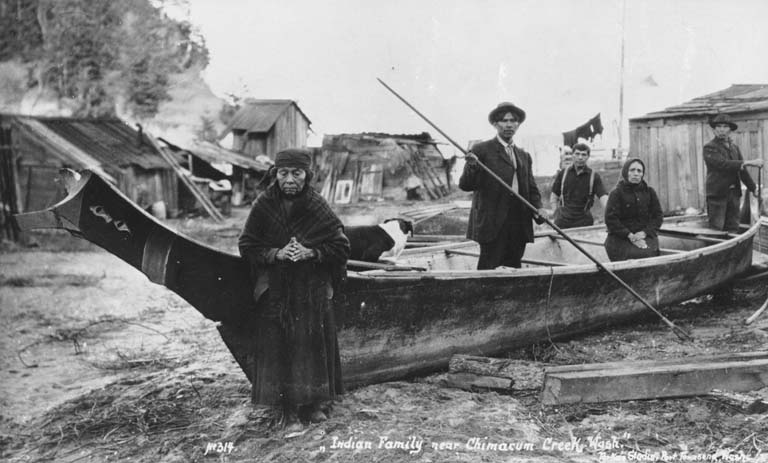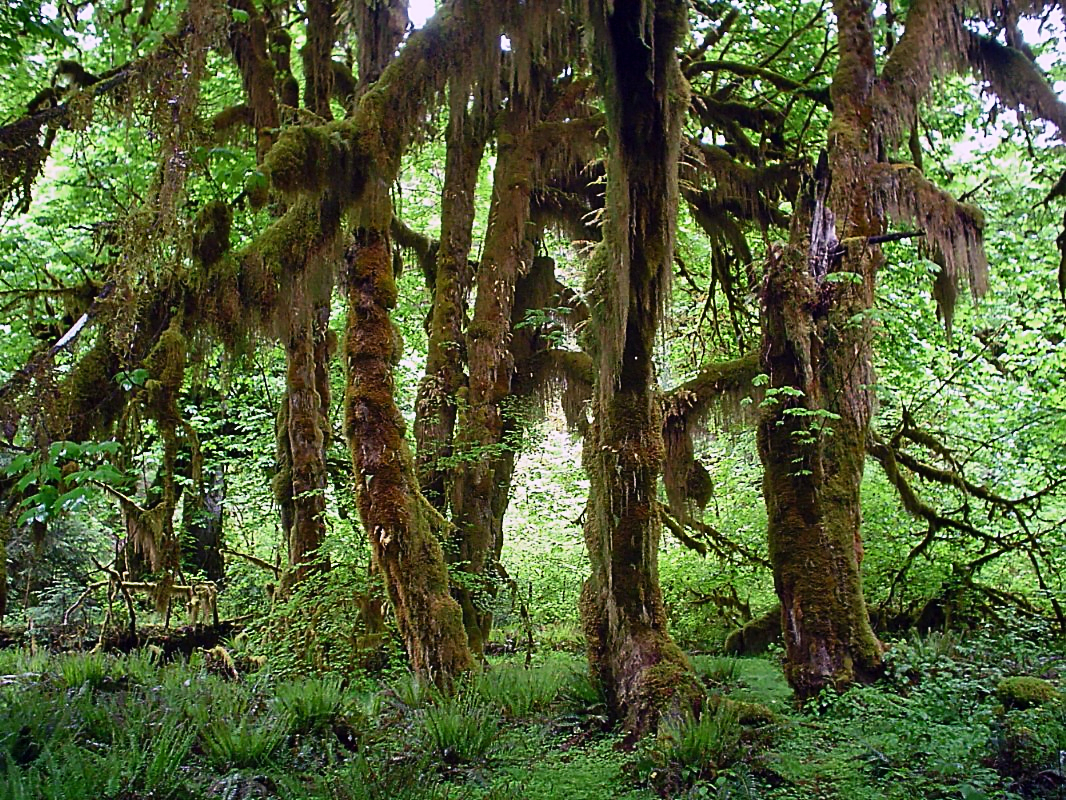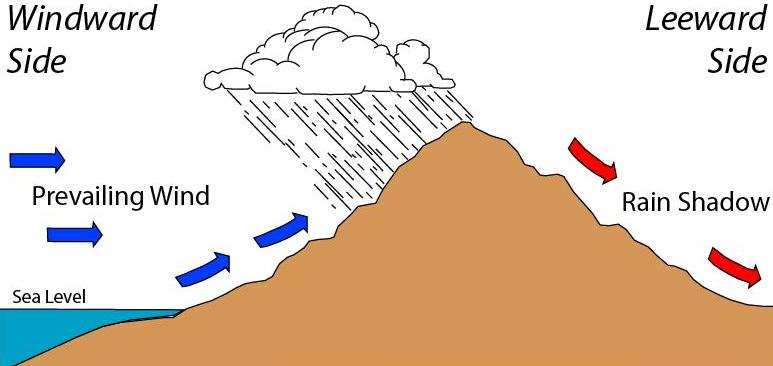|
Buckhorn Wilderness
The Buckhorn Wilderness is a mountainous wilderness area on the northeastern Olympic Peninsula in Washington, USA. Named after Buckhorn Mountain (), the wilderness abuts the eastern boundary of Olympic National Park which includes nearby Mount Constance (), Inner Constance (), Warrior Peak (), and Mount Deception (). History In 1984, the U.S. Congress established five wilderness areas within the Olympic National Forest: * Buckhorn Wilderness * Colonel Bob Wilderness * Mount Skokomish Wilderness * The Brothers Wilderness * Wonder Mountain Wilderness Buckhorn Wilderness is the largest of the five, all of which sit on the eastern flank of the Olympic Wilderness within Olympic National Park. Buckhorn Wilderness is administered by the Hood Canal Ranger District of the Olympic National Forest. Geography The lowest elevations of the Buckhorn Wilderness are found in the lower parts of the three principal drainages: at the Big Quilcene River, at the Dungeness River, and at Tow ... [...More Info...] [...Related Items...] OR: [Wikipedia] [Google] [Baidu] |
Jefferson County, Washington
Jefferson County is a county located in the U.S. state of Washington. As of the 2020 census, the population was 32,977. The county seat and only incorporated city is Port Townsend. The county is named for Thomas Jefferson. Jefferson County was formed out of Thurston County on December 22, 1852, by the legislature of Oregon Territory, and included the northern portion of the Olympic Peninsula. On April 26, 1854, the legislature of Washington Territory created Clallam County from the northwestern portion of this original area. The Hood Canal Bridge connects Jefferson County to Kitsap County, Washington. The Coupeville-Port Townsend route of the Washington State Ferries connects the county to Whidbey Island in Island County, Washington. Geography According to the United States Census Bureau, the county has a total area of , of which is land and (17%) is water. The county is split in three parts by its landforms: * Eastern Jefferson County along the Strait of Juan de Fu ... [...More Info...] [...Related Items...] OR: [Wikipedia] [Google] [Baidu] |
Wonder Mountain Wilderness
Wonder Mountain Wilderness is a designated wilderness area encompassing Wonder Mountain (Olympic Mountains), Wonder Mountain in the Olympic National Forest on the Olympic Peninsula of Washington (state), Washington in the United States. The wilderness comprises bordering Olympic National Park and administered by the U.S. Forest Service. Wonder Mountain Wilderness is roughly triangle-shaped. A high ridge encompasses the southern point of the triangle, rising to the peak of Wonder Mountain. Below the summit stands a heavy forest of western hemlock, Douglas fir, and Abies amabilis, silver fir. Alder, willow, and vine maple grow along McKay Creek and Five Stream, both of which have their headwaters in the wilderness. Vaccinium parvifolium, huckleberry and thimbleberry are also common. History In 1984, the U.S. Congress established five wilderness areas within Olympic National Forest: * Buckhorn Wilderness * Colonel Bob Wilderness * Mount Skokomish Wilderness * The Brothers Wildernes ... [...More Info...] [...Related Items...] OR: [Wikipedia] [Google] [Baidu] |
Western Red Cedar
''Thuja plicata'' is an evergreen coniferous tree in the cypress family Cupressaceae, native to western North America. Its common name is western redcedar (western red cedar in the UK), and it is also called Pacific redcedar, giant arborvitae, western arborvitae, just cedar, giant cedar, or shinglewood. It is not a true cedar of the genus ''Cedrus''. Description ''Thuja plicata'' is a large to very large tree, ranging up to tall and in trunk diameter. Trees growing in the open may have a crown that reaches the ground, whereas trees densely spaced together will exhibit a crown only at the top, where light can reach the leaves. The trunk swells at the base and has shallow roots. The bark is thin, gray-brown and fissured into vertical bands. As the tree ages, the top is damaged by wind and replaced by inferior branches. The species is long-lived; some trees can live well over a thousand years, with the oldest verified aged 1,460. The foliage forms flat sprays with scale-like l ... [...More Info...] [...Related Items...] OR: [Wikipedia] [Google] [Baidu] |
Old-growth
An old-growth forestalso termed primary forest, virgin forest, late seral forest, primeval forest, or first-growth forestis a forest that has attained great age without significant disturbance, and thereby exhibits unique ecological features, and might be classified as a climax community. The Food and Agriculture Organization of the United Nations defines primary forests as naturally regenerated forests of native tree species where there are no clearly visible indications of human activity and the ecological processes are not significantly disturbed. More than one-third (34 percent) of the world's forests are primary forests. Old-growth features include diverse tree-related structures that provide diverse wildlife habitat that increases the biodiversity of the forested ecosystem. Virgin or first-growth forests are old-growth forests that have never been logged. The concept of diverse tree structure includes multi-layered canopies and canopy gaps, greatly varying tree heights ... [...More Info...] [...Related Items...] OR: [Wikipedia] [Google] [Baidu] |
Climate
Climate is the long-term weather pattern in an area, typically averaged over 30 years. More rigorously, it is the mean and variability of meteorological variables over a time spanning from months to millions of years. Some of the meteorological variables that are commonly measured are temperature, humidity, atmospheric pressure, wind, and precipitation. In a broader sense, climate is the state of the components of the climate system, including the atmosphere, hydrosphere, cryosphere, lithosphere and biosphere and the interactions between them. The climate of a location is affected by its latitude/ longitude, terrain, altitude, land use and nearby water bodies and their currents. Climates can be classified according to the average and typical variables, most commonly temperature and precipitation. The most widely used classification scheme was the Köppen climate classification. The Thornthwaite system, in use since 1948, incorporates evapotranspiration along ... [...More Info...] [...Related Items...] OR: [Wikipedia] [Google] [Baidu] |
Olympic Range
The Olympic Mountains are a mountain range on the Olympic Peninsula of the Pacific Northwest of the United States. The mountains, part of the Pacific Coast Ranges, are not especially high – Mount Olympus is the highest at ; however, the eastern slopes rise out of Puget Sound from sea level and the western slopes are separated from the Pacific Ocean by the low-lying wide Pacific Ocean coastal plain. The western slopes are the wettest place in the 48 contiguous states. Most of the mountains are protected within the bounds of Olympic National Park and adjoining segments of the Olympic National Forest. The mountains are located in western Washington in the United States, spread out across four counties: Clallam, Grays Harbor, Jefferson and Mason. Physiographically, they are a section of the larger Pacific Border province, which is in turn a part of the larger Pacific Mountain System. Geography The Olympics have the form of a cluster of steep-sided peaks surrounded by heavi ... [...More Info...] [...Related Items...] OR: [Wikipedia] [Google] [Baidu] |
Rain Shadow
A rain shadow is an area of significantly reduced rainfall behind a mountainous region, on the side facing away from prevailing winds, known as its leeward side. Evaporated moisture from water bodies (such as oceans and large lakes) is carried by the prevailing onshore breezes towards the drier and hotter inland areas. When encountering elevated landforms, the moist air is driven upslope towards the peak, where it expands, cools, and its moisture condenses and starts to precipitate. If the landforms are tall and wide enough, most of the humidity will be lost to precipitation over the windward side (also known as the ''rainward'' side) before ever making it past the top. As the air descends the leeward side of the landforms, it is compressed and heated, producing foehn winds that ''absorb'' moisture downslope and cast a broad "shadow" of dry climate region behind the mountain crests. This climate typically takes the form of shrub–steppe, xeric shrublands or even d ... [...More Info...] [...Related Items...] OR: [Wikipedia] [Google] [Baidu] |
Tubal Cain Mine
Tubal Cain Mine is an abandoned copper mine in the Buckhorn Wilderness, east of Olympic National Park in the US state of Washington. The main adit penetrates 450 meters into Mount Worthington. The mine is named after Tubal-Cain, a character mentioned in the Bible. The Book of Genesis 4:22 says that Tubal-cain was a "forger of all instruments of bronze and iron," a metalsmith. History In 1902, copper was discovered in the Dungeness River drainage. The ore was said to have both copper and gold. Later that year, the Tubal-Cain Copper & Manganese Mining Co. headquartered in Seattle built a trail and began to mine ore out of the area. After an avalanche in 1912, which destroyed the main sawmill, powderhouse, and barn and clubhouse, activity at the mine declined. The mine never produced a dime of profit. Most geologists believe upheaval of the Olympic Mountains broke and scattered any large veins or pods of ore that may have existed.Taylor, Eva Cook. The Lure of Tubal Cain Mine. J ... [...More Info...] [...Related Items...] OR: [Wikipedia] [Google] [Baidu] |
Mount Fricaba
Mount Fricaba is a double summit mountain located in the Olympic Mountains, in Jefferson County of Washington state. It is situated on the shared border of Olympic National Park with Buckhorn Wilderness, and is the highest point in that wilderness, as well as the Olympic National Forest. Its nearest higher peak is Hal Foss Peak, to the southwest. Precipitation runoff from the peak drains east into headwaters of the Dungeness River, or west into Deception Creek which is a tributary of the Dosewallips River. The mountain's name was officially adopted in 1961 by the United States Board on Geographic Names based on usage by The Mountaineers since 1907, and inclusion in Fred Beckey's ''"Climber's Guide to the Cascade and Olympic Mountains of Washington"'' published in 1949. The first ascent of the mountain was made in 1957 by Don Bechlem and Jack Newman. Climate Mount Fricaba is located in the marine west coast climate zone of western North America. Most weather fronts originat ... [...More Info...] [...Related Items...] OR: [Wikipedia] [Google] [Baidu] |
Townsend Creek
Townsend Creek is a stream in Bourbon and Harrison counties, Kentucky, in the United States. It is a tributary of the South Fork Licking River. It was named for John Townsend, who settled near the creek in 1775. See also *List of rivers of Kentucky List of rivers in Kentucky ( U.S. state). By drainage basin This list is arranged by drainage basin, with respective tributaries indented under each larger stream's name. All rivers in Kentucky flow to the Mississippi River, nearly all by virtue ... References Rivers of Bourbon County, Kentucky Rivers of Harrison County, Kentucky Rivers of Kentucky Licking River (Kentucky) {{Kentucky-river-stub ... [...More Info...] [...Related Items...] OR: [Wikipedia] [Google] [Baidu] |
Dungeness River
The Dungeness River is a long river located in the Olympic Peninsula in the U.S. state of Washington. It rises near Mount Constance in the Olympic Mountains within the Olympic National Park, flows through the Buckhorn Wilderness, passes by the town of Sequim, and empties into the Strait of Juan de Fuca at Dungeness Bay, behind the Dungeness Spit. One of its main tributaries is the Gray Wolf River. It is crossed by the Dungeness River Bridge. The river was named for Dungeness Spit. The name "Dungeness" refers to the Dungeness headland in England. It was given by George Vancouver in 1792, who wrote: ''The low sandy point of land, which from its great resemblance to Dungeness in the British Channel, I called New Dungeness.'' Scarborough Island is a small eyot (river island) in the Dungeness River, in Sequim, Washington. About one acre square, it is located near Dungeness Meadows and can be seen from the Dungeness River Dike. See also *List of Washington rivers *Dungeness c ... [...More Info...] [...Related Items...] OR: [Wikipedia] [Google] [Baidu] |
Big Quilcene River
The Big Quilcene River is a river on the Olympic Peninsula in the U.S. state of Washington. Etymology The name "Quilcene" comes from the Twana word /qʷəʔlsíd/, referring to a tribal group and the name of an aboriginal Twana village and community on Quilcene Bay. Course The Big Quilcene River rises in the Buckhorn Wilderness near Marmot Pass, south of Buckhorn Mountain, and near Boulder Ridge. It flows generally east through the Olympic Mountains and the Olympic National Forest. After flowing south briefly the river is joined by Tunnel Creek and again flows east. It cuts through the Quilcene Range of the Olympic Mountains in which it collects a number of tributaries, including Mile And A Half Creek. Near Rainbow Campground the river turns north and is paralleled by U.S. Route 101. In its last few miles the river turns east and flows by the south side of Quilcene before emptying into Quilcene Bay, part of Hood Canal.General course info from USGS topographic maps acc ... [...More Info...] [...Related Items...] OR: [Wikipedia] [Google] [Baidu] |




